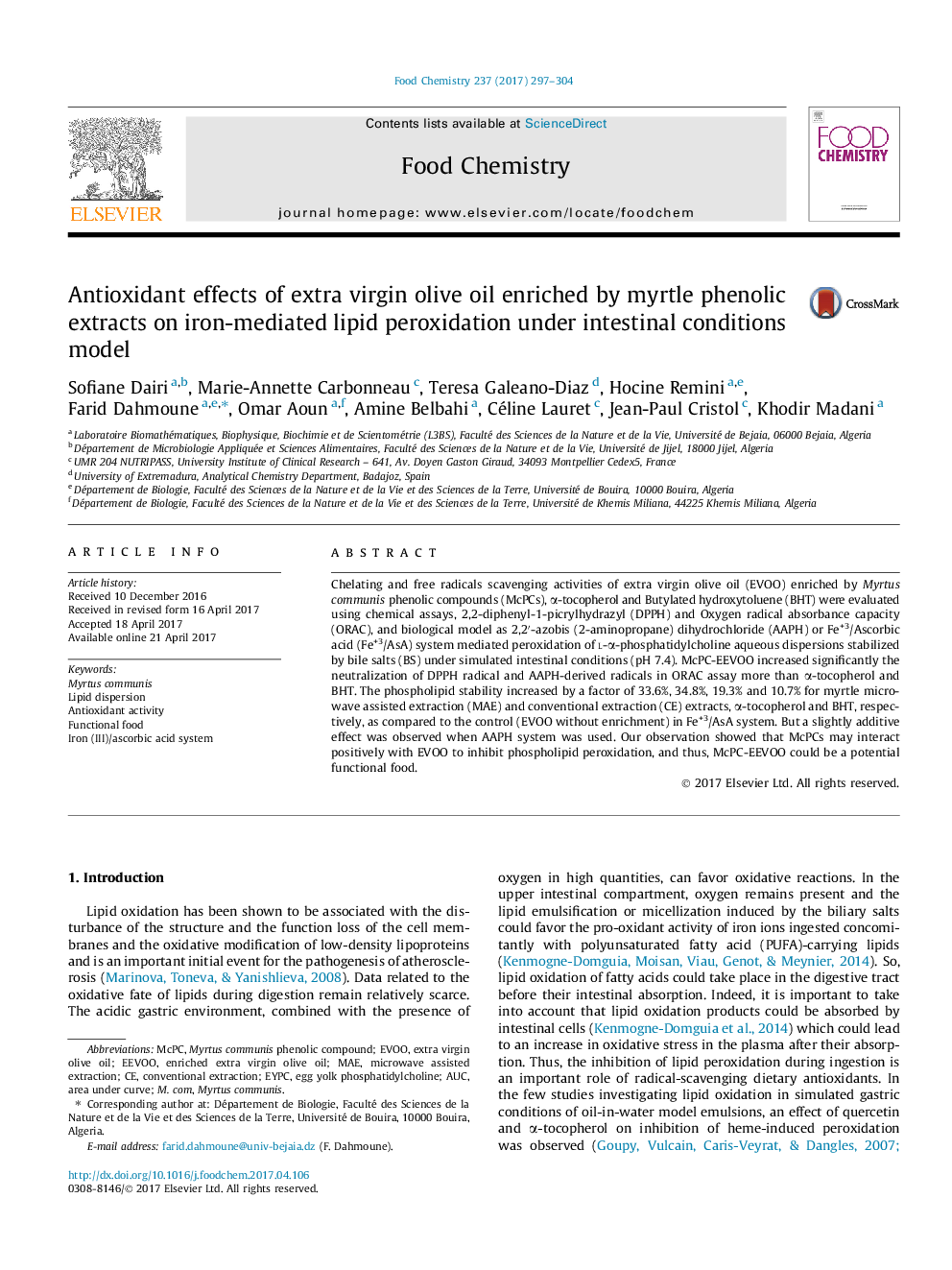| Article ID | Journal | Published Year | Pages | File Type |
|---|---|---|---|---|
| 5132726 | Food Chemistry | 2017 | 8 Pages |
â¢A phospholipid oxidation model was studied and the oxidant type effect was showed.â¢Myrtle phenolic compounds ability to counteract phospholipid oxidation was reported.â¢DPPH and ORAC values of enriched EVOO phenolic compounds were evaluated.â¢Antioxidant capacity improvement of enriched EVOO to counteract phospholipid oxidation.
Chelating and free radicals scavenging activities of extra virgin olive oil (EVOO) enriched by Myrtus communis phenolic compounds (McPCs), α-tocopherol and Butylated hydroxytoluene (BHT) were evaluated using chemical assays, 2,2-diphenyl-1-picrylhydrazyl (DPPH) and Oxygen radical absorbance capacity (ORAC), and biological model as 2,2â²-azobis (2-aminopropane) dihydrochloride (AAPH) or Fe+3/Ascorbic acid (Fe+3/AsA) system mediated peroxidation of l-α-phosphatidylcholine aqueous dispersions stabilized by bile salts (BS) under simulated intestinal conditions (pH 7.4). McPC-EEVOO increased significantly the neutralization of DPPH radical and AAPH-derived radicals in ORAC assay more than α-tocopherol and BHT. The phospholipid stability increased by a factor of 33.6%, 34.8%, 19.3% and 10.7% for myrtle microwave assisted extraction (MAE) and conventional extraction (CE) extracts, α-tocopherol and BHT, respectively, as compared to the control (EVOO without enrichment) in Fe+3/AsA system. But a slightly additive effect was observed when AAPH system was used. Our observation showed that McPCs may interact positively with EVOO to inhibit phospholipid peroxidation, and thus, McPC-EEVOO could be a potential functional food.
